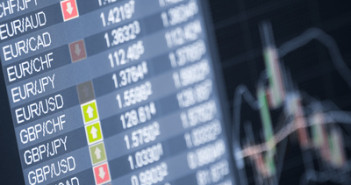Equity markets were anything but calm yesterday, whipsawing back and forth as updates on the volatile situation in Ukraine crossed the wires and influenced risk-taking appetite for investors. The North American session ended with a slightly positive tone after reports that Russian troops had returned from the Ukrainian border to their base, and the situation had de-escalated for the time being.
The S&P finished the day up by 0.32%, while the DXY held in the high-79s, and the cash VIX contract dipped below the 14% handle. It was a relatively quiet day for currencies as traders squared positions and readied themselves for what could be a volatile week ahead, with the EUR and GBP giving back their early morning gains against the big dollar after Pending Home Sales in the US came in better than expected with a 3.4% increase over the month of March, bucking the trend of soggy US housing statistics in early Spring.
The big news from the overnight Asian session was the announcement from China that the government would be getting tougher on loans for iron ore imports, putting greater scrutiny on the industry as concerns grow that steel mills are using those loans to keep underwater plants afloat. The news caused iron ore futures to tumble overnight, which incidentally put pressure on the Aussie in terms of the Euro and Loonie. The worrisome alternative channels of financing in the Chinese economy, and the supposed tightening of regulations in the coming months did little to scare off equity investors, as the Shanghai Comp finished its session up by 0.84%. The Aussie wasn’t as fortunate, with the proxy for Chinese commodity demand losing ground against the Euro and Loonie. The associated selling pressure in AUDCAD that pushed the pair below the 1.02 mark subsequently flowed through to USDCAD, with the latter busting through the 1.1000 handle and driving the pair into the high-1.09s as stops were taken out.
Focusing on the Eurozone. a number of key macro-economic reports were released overnight, right ahead of the all-important flash CPI print that is due tomorrow. Private loans and M3 money supply growth on an annualized basis for the month of March were released earlier this morning, and both came in lower than analysts had expected. Private loans contracted by a rate of 2.2% over the prior year, the same pace as in February, while money supply growth only managed a 1.1% increase compared to the last 12 months, worse than the 1.3% growth registered in February. The anemic growth in money supply was followed up with German inflation readings that came in lower than expectations by only increasing at a rate of 1.3% on an annualized basis in the month of April, but this was up from the 1.0% that was seen in March.
The f statistics coming in slightly softer than expected increases the chance of a downside risk to tomorrow’s Eurozone flash CPI reading for April. The measure is expected to rebound from the 0.5% that was registered in March, and come in at an annualized increase of 0.8% compared to the previous twelve months, but today’s reading could keep a lid on any meaningful takeoff for consumer prices in the zone. The EUR is marginally weaker against the USD this morning, but still decently supported after Mario Draghi’s comments to German lawmakers yesterday that QE is still “a way off†and relatively unlikely; EURUSD is currently treading water in the low 1.38s.
Getting set for the North American session, equity futures are trading broadly higher and looking to add to yesterday’s gains. The de-escalation of the tensions in Ukraine have seemed to calm the markets collective nerves, and have investors looking to increase their exposure to high-yield this morning. Commodities are seeing mixed price action before the opening bell, with Gold off $6/ounce to pivot around the $1,290/ounce handle, while front-month WTI pushes its way above $101/barrel. The Case Shiller House Price Index is due out at 09:00EST and although unlikely to provide the market with anything pivotal in terms of direction, will play into the overall narrative for the housing industry to begin 2014. House prices are forecast to see their pace of increase slow by a moderate amount in February, down to 13%, but with the struggles we saw with other housing indicators for February, the index could very well print below the 13% mark.
Looking ahead to the remainder of the session, Bank of Canada Governor Stephen Poloz is set to speak in Ottawa today, with him comments to the House Standing Committee parsed by traders to gauge whether Poloz has changed his view towards monetary policy since two weeks ago. We expect Poloz will speak with the same tones parlayed from the rate decision in mid-April, leaning to the dovish side of a neutral stance towards the future path of interest rates.
While it is probable that the BoC chief acknowledges the slight up-tick in inflation for March being attributed to transitory factors, and that there is still more work to be done re balancing the economy from consumer driven demand to export growth and business investment, we feel he risk with Poloz’s speech will be to the upside for the Loonie, as the slightly dovish to neutral tone is already well priced into the markets.
Should Poloz tweak his language so he’s slightly more optimistic on the medium-term inflation outlook, this might be enough to spark a round of Loonie buying. Make sure to speak with your dealing teams ahead of today’s speech, as the price action following the remarks will also have implications for later in the week as we get monthly GDP figures for Canada on Wednesday.
Further reading:
ECB really getting ready for QE? Job offer suggests so
EUR/USD: Trading the Eurozone CPI Flash Estimate



